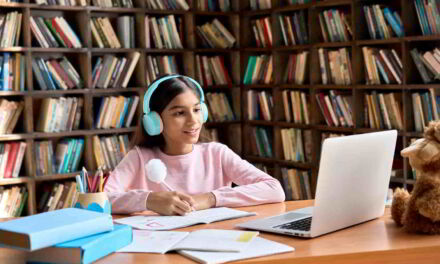The need to provide virtual learning solutions while students have been confined to their own home.
With Ofsted announcing ‘no expectations on learning‘ during the pandemic, some schools are using basic learning platforms to educate their students.
But what can be done to make sure students are more engaged in education? This blog post explains why virtual learning is more than a presentation.
91% of the world’s population affected by school closures
Nationwide closures have estimated to have impacted more than 91% of the world’s student population.
Moving learning from classrooms to the home at speed created enormous challenges.
Victory (for schools) during the pandemic does not include the development of high-quality online education and learner experience, with providers focusing largely on bare-bone guidance and just in time training.
While this may be seen as a short term success, it can mean the learners’ experience is a substandard one.
Trying to teach a class via Zoom conferencing can result in problems. Not least safeguarding – there are a number of ways using a video conferencing tool is not secure: you can find out more here.
How can you monitor attainment?
Using either the wrong tool or sending documents via email to students are forms of one-way communication which has limitations on how much it can help the student.
By utilising online learning to the full, you can use an all-in-one system which means you can monitor the engagement of the student.
At the very least you should be monitoring attainment and whether work is being returned – at it’s best you can utilise an online learning platform to provide instant feedback to the student and the school.
Tracking pupil performance online means you can provide one-to-one tuition by tailoring learning to their needs.
Find out more about tracking here.
Access to teachers
Using EDLounge Group Ltd we can also provide the option to reach out to our highly skilled, enhanced CRB checked teachers.
Our qualified teachers work with your teachers to educate learners. It means your organisation can benefit from our online support for off-site learners, who are further supported by the tailored learning pathways.
Further, our system monitors behaviour and safety. All virtual lessons can be streamed for live teacher viewing, while it is also recorded and backed up for safeguarding protocols.
Is virtual learning here to stay?
The leader of the teachers’ union has said that virtual learning is here to stay.
However various sources explain the schools need to be more aware of it’s potential.
“Blended learning will almost certainly be in place until there is a vaccine,” says Larry Flanagan (Leader of the EIS union).
There will be nothing normal about it (schools’ readmitting pupils). There will have to be some adjustment because you probably won’t get whole classes in at one time. Realistically it will be staggered and pupils will maybe go in for days at a time rather than a morning or afternoon.
The sudden lack of face-to-face learning has highlighted the need for organisations to build a technological backbone in order to keep participants engaged and energised at home.
Rather than instructors simply uploading a recording of their lessons, technology enables organisations to be more innovative by not only teaching remotely, but collectively.
Wherever possible, active learning experiences should be created for students by injecting social learning components – ones in which there is synchronous communication, required class sessions, frequent opportunities for students to answer questions and defend answers, debate their peers and provide feedback.
For more information on EDClass call 01909 568338 or email mail@edclass.com.









